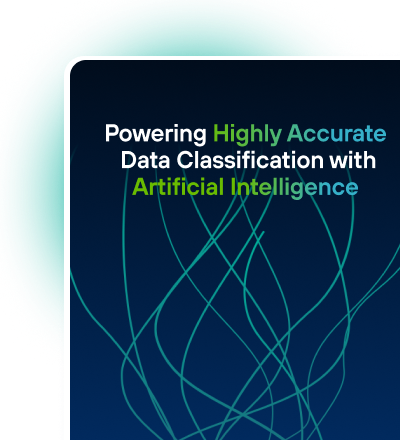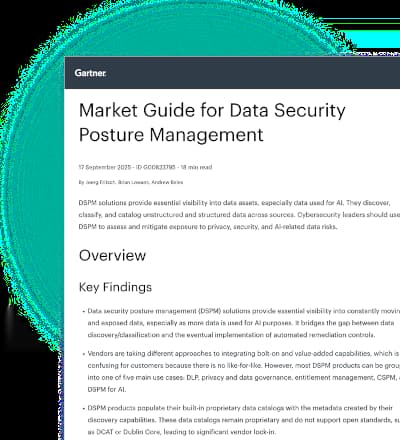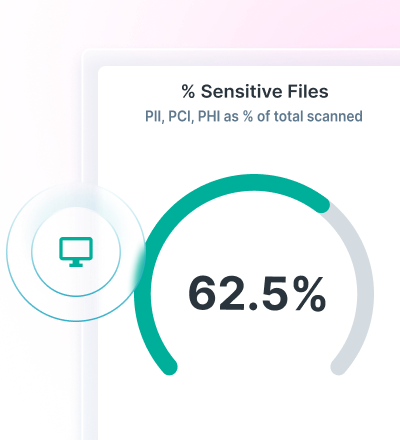AI Security Posture Management (AI-SPM): What it is and How it Works
0 minutos de lectura

AI Security Posture Management (AI-SPM) is how enterprises keep their GenAI momentum without creating blind spots. As AI moves from pilots to production, posture management must extend beyond cloud settings to include models, data, pipelines, notebooks, prompts, agents and runtime usage.
That means building and maintaining an AI-BOM (bill of materials), finding shadow AI, improving configurations and proving NIST AI RMF readiness while protecting sensitive data everywhere it flows.
What is AI Security Posture Management?
AI Security Posture Management (AI-SPM) is the continuous practice of discovering AI assets, evaluating risk, applying policies and monitoring behavior to reduce exposure. Below are other areas AI-SPM might involve.
- Models and model services: foundation, fine-tuned and RAG deployments (public, private or custom).
- Data used by AI: training sets, reference corpora, vector stores, embeddings, caches, logs.
- Pipelines and tools: feature stores, notebooks, agents, orchestration frameworks and MLOps systems.
- Prompts and guardrails: prompt libraries, templates, retrieval chains, function calling.
- Secrets and access: API keys, tokens, credentials, RBAC/ABAC, network and identity paths.
- Runtime usage: prompts/responses, over-use anomalies, exfil attempts, jailbreaks and high-risk routes.
Unlike traditional perimeter tools, AI-SPM looks inside the model supply chain and usage patterns.
Why AI-SPM Now
AI adoption is exploding across every department such as marketing content, customer support, engineering, procurement and more. With that adoption comes new attack paths and failure modes:
- Prompt injection and indirect prompt injection that hijack toolchains.
- Data poisoning in training.
- Model and data extraction via over-permissive prompts or misconfigured endpoints.
- Key and token leakage from repos, notebooks and chat histories.
- Shadow AI use that sidesteps review and governance.
At the same time, boards and regulators expect measurable control. Frameworks such as the NIST AI Risk Management Framework and laws like the EU AI Act are shaping governance expectations.
Security teams need to show how they protect data, models, and usage, prove compliance readiness and enable the business with safe GenAI. AI-SPM provides that operating system for control and assurance.
Core Capabilities Buyers Expect From AI-SPM
Security and risk leaders might look for these pillars when evaluating AI-SPM.
AI discovery and AI-BOM
- Automatic discovery of AI services across clouds (for example, Azure OpenAI, Amazon Bedrock, Google Vertex AI) and internal platforms.
- Inventory of models, endpoints, datasets, vector stores, notebooks, agents and dependencies.
- Ownership and criticality tagging for business context.
- Shadow AI discovery to surface unsanctioned tools and projects.
Secure configuration baselines
- Improving checks for AI services and surrounding resources: private endpoints, managed identities, network egress, KMS integration, logging and secret scope isolation.
- Drift detection with actionable recommendations and guided remediation.
- Guardrail assessment for prompts, tools and function calling policies.
Sensitive data discovery and lineage
- Classification across training, fine-tuning, and inference data, including vector stores and caches.
- Coverage for PII, PHI, PCI, source code, financials and mission-critical IP.
Keys/tokens hygiene
- IP scanning across repos, notebooks, wikis and chat exports.
- Rotation workflows and policy checks for vault usage and key scope.
- Anomaly alerts for sudden access spikes by a credential or service principal.
Runtime monitoring and misuse detection
- Prompt and response analytics to identify model misuse, exfiltration patterns, over-use or jailbreak attempts.
- Session-level controls to coach, quarantine, redact or block based on data type, group or application.
- OWASP LLM risk coverage, including injection, insecure output handling and sensitive information disclosure.
Attack path analysis extended to AI
- End-to-end graph of identities, networks, data stores and AI endpoints.
- Simulation to identify the shortest path from an exposed dataset to a model endpoint or from a compromised token to sensitive data.
- Prioritized fix-lists to break high-impact paths fast.
Governance and compliance mapping
- Control catalogs aligned to NIST AI RMF, EU AI Act risk tiers, sectoral mandates and internal policies.
- Audit trails with evidence of who changed what policy, when and why.
- Board-ready dashboards showing risk posture reductions and policy coverage.
Remediation and orchestration
- One-click or workflow fixes for misconfigurations, over-permissive roles or exposed datasets.
- Integrations to ticketing, CI/CD and SOAR for repeatable resolution.
- Policy-as-code options for platform and DevSecOps teams.
Forcepoint’s Approach to Securely Enabling AI
One of our favorite use cases of Forcepoint solutions is to apply them to securely enabling AI. We’re here to help organizations manage shadow AI, protect data and monitor access.
Below are a few benefits of using Forcepoint to gain visibility and secure AI usage.
Gain Visibility:
- Discover which AI applications users are visiting and prevent access to unapproved platforms.
- Identify sensitive data shared with SaaS and internal AI applications from managed and unmanaged devices.
- Spot sensitive data in outputs from ChatGPT Enterprise.
Secure AI Usage:
- Implement granular access controls to block risky services and guide users to approved apps.
- Stop inappropriate sharing of regulated data and intellectual property in AI prompts.
- Control sensitive data in outputs from ChatGPT Enterprise and automatically correct Microsoft data classification tags.
Here are a few more benefits of leveraging Forcepoint to securely enable AI innovation.
- Control Shadow AI: Detect and control shadow AI for thousands of applications with Forcepoint Web Security.
- Stop Data Exfiltration via AI: Enable in-line blocking of sensitive data with high accuracy in generative AI and other AI applications using Forcepoint Data Loss Prevention (DLP).
- Enhance Security for ChatGPT Enterprise and Microsoft: Plug into ChatGPT Enterprise and Microsoft using APIs for granular visibility and control with Forcepoint Data Security Posture Management (DSPM).
- Streamline Regulatory Compliance: Access over 1,700 data classifiers, policies and templates out of the box to streamline compliance for AI applications.
FAQ
What is AI-SPM?
AI Security Posture Management discovers AI assets, evaluates risk, applies policies, and monitors usage to protect models, data and pipelines.
How is AI-SPM different from DSPM and CSPM?
CSPM supports cloud infrastructure, DSPM secures sensitive data wherever it lives and AI-SPM adds model- and usage-aware controls.
How does AI-SPM support NIST AI RMF and EU AI Act readiness?
AI-SPM maps controls to governance requirements, maintains audit trails and provides evidence for assessments. It shows how you identify risks, reduce exposure, and monitor usage, which are key expectations in both the NIST AI RMF and the EU AI Act.
Safely Enable AI with Forcepoint
See how Forcepoint solutions can help your organization safely enable AI HERE.

Brandon Keller
Leer más artículos de Brandon KellerBrandon is a Multimedia Content Marketer, driving content strategy and development across Forcepoint platforms. He applies his enterprise marketing experience to help organizations adopt industry-leading security solutions.
- Use Case: GenAI Data Security
En este post
 Use Case: GenAI Data SecuritySecure GenAI
Use Case: GenAI Data SecuritySecure GenAI
X-Labs
Reciba información, novedades y análisis directamente en su bandeja de entrada.

Al Grano
Ciberseguridad
Un podcast que cubre las últimas tendencias y temas en el mundo de la ciberseguridad
Escuchar Ahora








